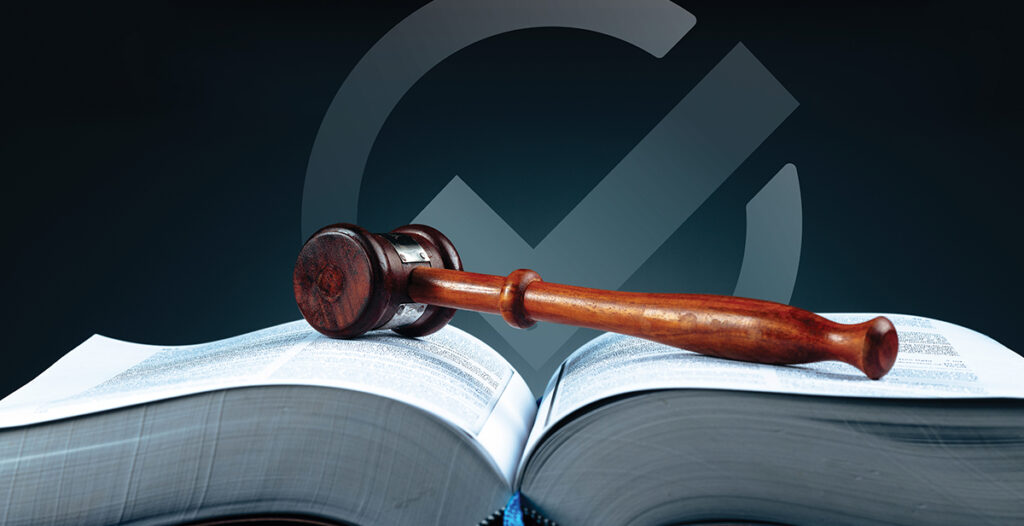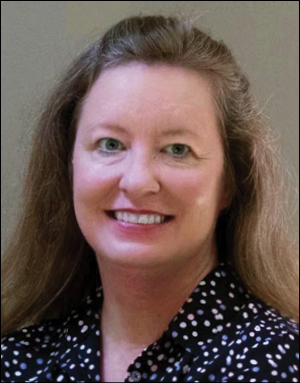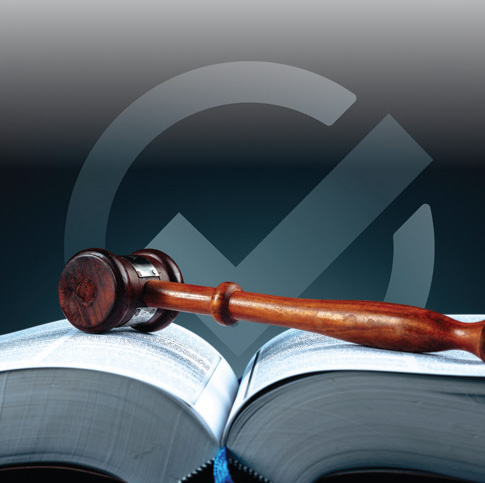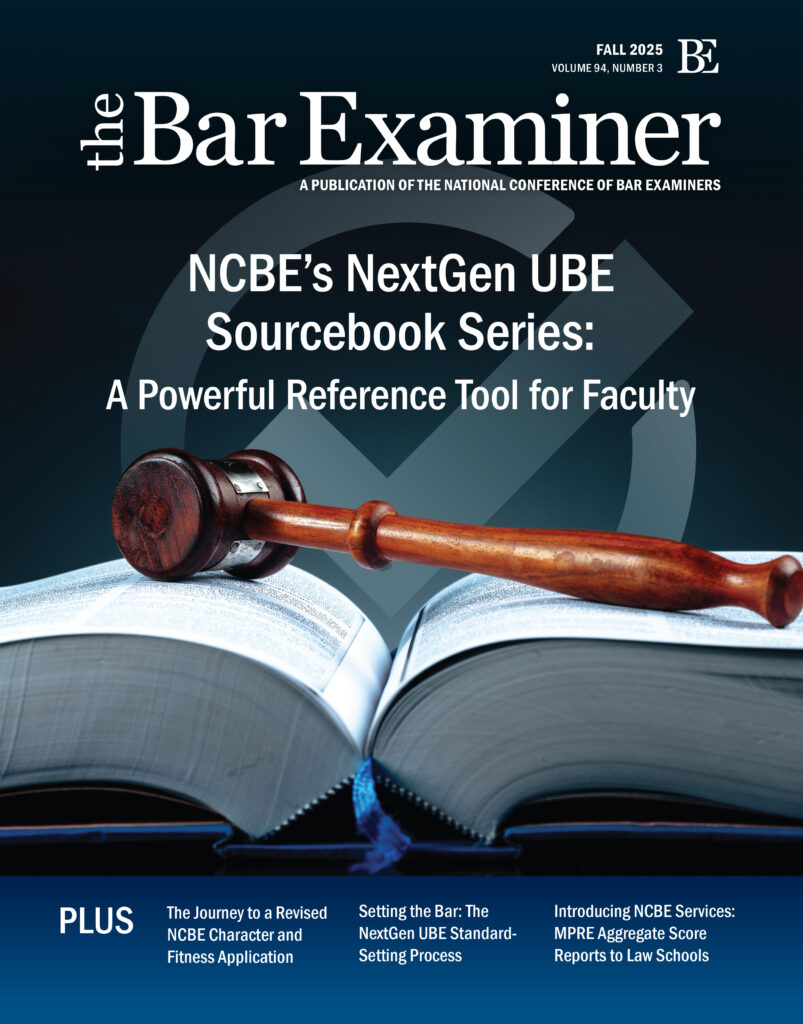By Beth E. Donahue Beginning this fall, NCBE is launching a series of Sourcebooks, published by West Academic, that will cover the doctrinal concepts and principles within the scope of assessment for the July 2026 and February 2027 administrations of the NextGen UBE, with plans to update the Sourcebooks as needed on an annual basis. Each focuses on one subject area tested on the exam (e.g., Contracts, Torts), listing the testable doctrine within that subject area in an organizational structure that follows the corresponding subject matter outline published as part of the NextGen Content Scope.1 The Sourcebooks are technical references for NextGen stakeholders, especially educators and bar examiners interested in specific points of doctrinal exam scope and depth, with each Sourcebook citing a small number of sources that should be readily available in law libraries. This article introduces the Sourcebook series by providing two examples of their content, explaining their background and intended purpose and use, and discussing their limitations for study and research beyond this intended purpose.
Beginning this fall, NCBE is launching a series of Sourcebooks, published by West Academic, that will cover the doctrinal concepts and principles within the scope of assessment for the July 2026 and February 2027 administrations of the NextGen UBE, with plans to update the Sourcebooks as needed on an annual basis. Each focuses on one subject area tested on the exam (e.g., Contracts, Torts), listing the testable doctrine within that subject area in an organizational structure that follows the corresponding subject matter outline published as part of the NextGen Content Scope.1 The Sourcebooks are technical references for NextGen stakeholders, especially educators and bar examiners interested in specific points of doctrinal exam scope and depth, with each Sourcebook citing a small number of sources that should be readily available in law libraries. This article introduces the Sourcebook series by providing two examples of their content, explaining their background and intended purpose and use, and discussing their limitations for study and research beyond this intended purpose.
“…[T]here’s no one-size-fits-all approach to limiting the depth of doctrine across multiple subject areas.… we have been mindful in each case to follow any applicable annotations from the subject matter outlines…”
The excerpt of the Contracts Sourcebook lists principles from the Restatement (Second) of Contracts, reflecting the doctrinal approach examinees are expected to apply to questions on the relevant topic. Although some jurisdictions may take different approaches, local variations are not mentioned and not tested on the NextGen UBE. For most topics, the Sourcebooks identify a single approach—typically the majority approach or the approach that NCBE’s expert drafters (legal educators, practicing attorneys, and justices and judges) believe reflects the clear trend among jurisdictions that have recently addressed the topic.
The second excerpt is a portion of the Real Property Sourcebook that lists principles from treatises reflecting the doctrinal approach(es) examinees are expected to apply to questions on the relevant topic. In this case, examinees are expected to be aware of multiple approaches, reflected in the shaded boxes titled “Testable Jurisdictional Split.” These splits are identified in the Sourcebooks for topics where NCBE’s expert drafters believe there is more than one influential approach among jurisdictions and no clear majority.
Background and Intended Purpose and Use
Background
The idea of documenting sources of law tested on the NextGen exam has been percolating for years in connection with the development of the NextGen content scope. Given differences in the law across jurisdictions, stakeholders—especially educators—have reported uncertainty regarding which doctrinal approaches are (or should be) tested. This was a criticism of the legacy UBE expressed “with some degree of frequency by stakeholders” during the focus group studies described in NCBE’s Testing Task Force Phase 1 Report, published in 2019:
NCBE’s subject matter outlines on the scope of coverage of topics tested within each subject are not detailed enough. Further, the subject matter outlines should indicate the sources of law being tested.2
Content Examples
Contracts Sourcebook (July 2026–February 2027) Excerpt
Limitations on the power of acceptance
Sources
- The Offeree’s Power of Acceptance (Rest. 2nd § 35):
(1) An offer gives to the offeree a continuing power to complete the manifestation of mutual assent by acceptance of the offer.
(2) A contract cannot be created by acceptance of an offer after the power of acceptance has been terminated in one of the ways listed in § 36 (methods of termination of the power of acceptance).
- Methods of Termination of the Power of Acceptance (Rest. 2nd § 36):
(1) An offeree’s power of acceptance may be terminated by
(a) rejection or counter-offer by the offeree, or
(b) lapse of time, or
(c) revocation by the offeror, or
(d) death or incapacity of the offeror or offeree.
(2) In addition, an offeree’s power of acceptance is terminated by the non-occurrence of any condition of acceptance under the terms of the offer.
- Termination of Power of Acceptance Under Option Contract (Rest. 2nd § 37): [Unlike the rules related to offers], the power of acceptance under an option contract is not terminated by rejection or counter-offer, by revocation, or by death or incapacity of the offeror, unless the requirements are met for the discharge of a contractual duty.
- Rejection (Rest. 2nd § 38):
(1) An offeree’s power of acceptance is terminated by his rejection of the offer, unless the offeror has manifested a contrary intention.
(2) A manifestation of intention not to accept an offer is a rejection unless the offeree manifests an intention to take it under further advisement.
- Counter-offers (Rest. 2nd § 39):
(1) A counter-offer is an offer made by an offeree to his offeror relating to the same matter as the original offer and proposing a substituted bargain differing from that proposed by the original offer.
(2) An offeree’s power of acceptance is terminated by his making of a counter-offer, unless the offeror has manifested a contrary intention or unless the counter-offer manifests a contrary intention of the offeree.
- Time When Rejection or Counter-Offer Terminates the Power of Acceptance (Rest. 2nd § 40): Rejection or counter-offer by mail or telegram does not terminate the power of acceptance until received by the offeror . . . .
- Lapse of Time (Rest. 2nd § 41(1)–(2)):
(1) An offeree’s power of acceptance is terminated at the time specified in the offer, or, if no time is specified, at the end of a reasonable time.
(2) What is a reasonable time is a question of fact, depending on all the circumstances existing when the offer and attempted acceptance are made.
Content Examples
Real Property Sourcebook (July 2026–February 2027) Excerpt
Mortgage theories: title, lien, and intermediate
Sources
Testable Jurisdictional Split: Mortgage Theories
“Three ‘theories’ of mortgage law exist today in the United States”3:
Title theory: “Under the title theory, legal ‘title’ is in the mortgagee until the mortgage has been satisfied or foreclosed.”4 Nevertheless, mortgage documents or state laws generally “give possession to the mortgagor until default.”5
Lien theory: In jurisdictions adopting this theory, “the mortgagee holds no ‘title’ but has security only. The mortgagor, accordingly, has the right to possession until there has been a valid foreclosure.”6
Intermediate theory: The “intermediate theory gives the right to possession to the mortgagor at least until default, and generally to the mortgagee after default.”7
Examinees must have memorized knowledge of the jurisdictional split. If an exam question requires examinees to evaluate the applicability of doctrine, examinees should assume that the jurisdiction follows the lien theory unless the question instructs or suggests otherwise.
- Differences between the lien theory, title theory, and intermediate theory:
- Mortgagee’s right to possession:
- In title theory and intermediate theory states, the mortgagee has an immediate right to possession of the property upon a mortgagor’s default; in lien theory states, the mortgagee has no right of possession until foreclosure.
- Default rules: Parties generally are free to contract around these default rules regarding a mortgagee’s right to possession.8
- Mortgagee’s right to possession:
Testable Jurisdictional Split: Contracting for Mortgagee’s Right to Possession in Lien Theory States
“Some states adopting the lien theory hold that there is a statutory policy against possession in the mortgagee that invalidates agreements in the mortgage permitting the mortgagee to enter. . . . Nevertheless, in other lien states an agreement between the parties giving the mortgagee the right to possession of the mortgaged premises, is valid.”9
Examinees must have memorized knowledge of the jurisdictional split. If an exam question requires examinees to evaluate the applicability of doctrine, the question will inform examinees of which approach has been adopted in the jurisdiction.
- Mortgagee’s right to rents:
- Title theory: “[U]nless the mortgage provides otherwise, the mortgagee in a title theory state has the right to collect rents and profits until the mortgage debt is paid or foreclosure has occurred.”10
- Lien theory: “Under the lien theory, the mortgagor retains the [exclusive] right . . . to the rents and profits until foreclosure.”11
- Intermediate theory: “[A] mortgagee has the right to . . . collect rents and profits after the mortgagor defaults,” but not before.12
When the Content Scope Committee studied the scope of NextGen content in more detail in 2021, the committee considered whether source citations (e.g., sections of the UCC, Restatements, case citations) could be listed for each topic in the subject matter outlines. As the committee assessed this idea, it identified several hurdles that needed to be overcome to include such information:
- For some common law topics, there may be no source for succinct rule statements; the rules must be synthesized from multiple statutes or judicial opinions, or from lengthy sections of scholarly treatises analyzing them. Indeed, even experts may not know what the majority approach is.
- For other common law topics, as well as for many Constitutional Law and Criminal Procedure topics, succinct rule statements are available but buried in lengthy judicial opinions (making a citation to the opinion unhelpful or even misleading without a parenthetical quote and pinpoint cite).
To address these difficulties, the committee encouraged NCBE to consider creating a separate “Rule Book,” envisioned as a list of actual rule statements (not simply citations), while acknowledging that such a project would be time consuming and should not delay publication of the NextGen Content Scope materials.
While source documentation work has continued behind the scenes, NCBE published the NextGen Content Scope materials with two substantive additions to the legacy UBE subject matter outlines, designed to partially address the scope concern reported above. First, the NextGen Content Scope adds annotations to many topics in the outlines, providing more detail about what is meant to be included within the topics. Second, the NextGen Content Scope adds star icons to those topics where greater levels of content knowledge and memorization of doctrine would be expected (the starred topics above being two such examples).
Stakeholder opinion regarding these additions has been varied. It has always been true that some exam topics require more detailed doctrinal knowledge than others, either because there is simply more law to know or because most experts would agree that some topics are more important to entry-level practice. Yet using stars to make this more transparent has been a source of some debate among stakeholders who have the most knowledge of bar exam content (e.g., bar readiness educators) and are attempting to understand with more precision the boundaries between starred and unstarred topics.
Unstarred Sourcebook Topics
Those stakeholders most in the weeds of exam-tested doctrine will note that the approach to unstarred topics in the Sourcebooks varies depending on the nature of the underlying law. As I have discussed with many of you over the last few years, there’s no one-size-fits-all approach to limiting the depth of doctrine across multiple subject areas. Yet I hope you will find that we have been mindful in each case to follow any applicable annotations from the subject matter outlines and to stay true to the unstarred focus: testing enough about a topic to ensure examinees demonstrate that they recognize the topic when it comes up in practice, even if they do not have an extensive amount of doctrine committed to memory. Our main approaches have been:
- In some instances, we focused on building-block concepts akin to definitional understanding of what legal terms mean while excluding principles dictating how the concepts are combined and used in specific cases (Real Property estates in land provide examples of this approach).
- In some cases, we condensed a large body of law to a much more basic set of principles that NCBE expert drafters describe as the framework of how one approaches a topic, excluding principles that apply to specific cases (unstarred UCC topics provide examples of this approach).
- In rule-based subject areas with narrow unstarred topics, we sometimes found the simplest way to express the scope of coverage was to state the rules themselves. In such cases we often provided a reminder that resources may be provided when examinees are asked to apply the rules to determine the outcome of a case (unstarred hearsay exceptions provide examples of this approach).
- Throughout the Sourcebooks, when listed concepts and principles could be read to suggest a greater scope of coverage than intended, we added notes to specifically exclude certain branches or nuances of doctrine.
Intended Purpose and Use
The purpose of the Sourcebooks is to provide substantially greater transparency about the doctrinal scope of the NextGen UBE by explicitly identifying which concepts and principles are assessed on the exam. The Sourcebooks document the universe of testable doctrine, but not all the doctrine in the Sourcebooks will be tested on each exam form—just like the legacy UBE, each form of the NextGen exam will sample a range of topics from each subject area. For academic stakeholders interested in aligning parts of their courses to NextGen coverage, or who are simply interested in how the NextGen UBE treats particular topics, the Sourcebooks will provide exhaustive detail.
The Sourcebooks will also provide greater insight to NCBE’s most direct stakeholders—bar examiners and justices of jurisdictions’ highest courts—regarding exam content. In recent years, these stakeholders’ reflections on the future of legal licensure have led some jurisdictions to consider alternate paths to licensure, jurisdiction-specific exam components, and a variety of limited and/or specialized licenses. Such alternatives and supplements to the NextGen UBE require understanding of what gaps exist in terms of what NCBE provides, or could provide, as a national exam developer and what is best accomplished at the jurisdiction level.
Some Sourcebooks may divide opinion due to greater jurisdictional variations and more topics that anticipate knowledge of jurisdictional splits. It is important to note that the Sourcebooks are not treatises reflecting the existing state of the law and do not provide rationales for why some approaches are tested and others are not. The Sourcebooks are intended to be technical NextGen scope documents that identify the doctrinal knowledge that is fair game to be tested on the exam. Through transparency surrounding the scope of NextGen doctrinal content, NCBE hopes to continue discussions with stakeholders about how exam content aligns with studies of entry-level practice, such as the Testing Task Force’s practice analysis,13 as well as with stakeholders’ expectations and needs.
NCBE’s overall aim is for the Sourcebooks to create greater certainty in the near term as we look forward to the launch of the NextGen UBE and to support more focused and detailed studies of exam content in the future.
“ It is also important to note that the documented doctrinal concepts and principles should not be understood as a rigid cap on all types of knowledge that may assist examinees in performing well on the NextGen exam.”
Recommendation Regarding Intended Use
The intended use of the Sourcebooks is as a reference collection akin to a specialized legal dictionary. Curious how the NextGen UBE covers contract modification? The Contracts Sourcebook is your one-stop shop for an answer. But a Sourcebook is not meant to be read cover to cover. You might even find it more tedious than a legal dictionary; it is a compilation of source quotations and paraphrased statements from multiple sources that do not flow cohesively in terms of style. Nevertheless, to those whose life’s work will benefit from such a reference, including those bar exam nerds I’ve come to know and love over the years (who will no doubt ignore my advice and read the Sourcebooks straight through), I hope you will see the immense value in NCBE’s commitment to producing this series and maintaining it into the future.
Limitations
It is important to note that the Sourcebooks are not intended as comprehensive study guides or bar review outlines for examinees and have significant limitations as such. Limitations include:
- The documented concepts and principles are often quoted directly from the cited sources. The extensive use of quotations is intended to help educators find references easily. But the quotations do not always reflect the wording that a skilled educator would use in stating the underlying concepts and principles and are not mandatory language that examinees must parrot on the exam.
- The Sourcebooks do not replace a comprehensive and rigorous legal education. They do not explain when or how to apply the documented concepts and principles. The NextGen UBE does not assess memorized legal knowledge in a vacuum. The exam assesses an examinee’s ability to perform common lawyering tasks involving the application of legal knowledge to fact patterns typical of entry-level practice. (Consider whether, given the Federal Rules of Evidence, a person could answer bar exam Evidence questions correctly without having studied the types of factual scenarios that trigger each rule, how the rules relate to one another, and the sequence in which they should be considered when multiple rules may be at issue.)
- The documented concepts and principles are organized within the structure of the NextGen UBE’s subject matter outlines. Each outline’s structure is intended to group clusters of related topics together within a larger subject area or discipline, for ease of comparison to law school course outlines in the same disciplines. The structure of the Sourcebooks does not convey how concepts and principles work together or overlap with one another, either within or across disciplines.
It is also important to note that the documented doctrinal concepts and principles should not be understood as a rigid cap on all types of knowledge that may assist examinees in performing well on the NextGen exam:
- The Sourcebooks do not document practical knowledge inherent in performing the lawyering tasks assessed on the exam. For example, research skills assessed on the exam require practical knowledge of the types of legal sources and documents that would advance a lawyer’s understanding of a client’s position and options.
- The documented doctrinal concepts and principles are intended to be sufficient to answer all NextGen questions as a matter of legal doctrine. However, grading teams assigned to constructed-response questions may occasionally, in their discretion, award credit to examinee responses grounded in additional, alternate approaches to doctrine that are not documented in the Sourcebooks.
Conclusion
The forthcoming Sourcebook series is, in one sense, a necessarily lengthy documentation of what most of NCBE’s stakeholders would expect to be assessed on the NextGen UBE across most topics, along with some clarifications on topics where the law is murky or complex. It is likely that, on a few topics, stakeholders will differ regarding how much doctrine should be within the scope of testing. Moreover, it is likely that stakeholders will disagree with one another on the treatment of certain topics. Transparency of this kind will no doubt yield a few headaches. But these are the kinds of headaches that NCBE welcomes, as greater transparency ultimately supports greater trust between NCBE and its stakeholders. When approached in this way, the Sourcebooks are a powerful tool.
Notes
- NCBE, “Bar Exam Content Scope: July 2026–February 2027” (August 1, 2025). (Go back)
- NCBE Testing Task Force, “Testing Task Force Phase 1 Report: Your Voice: Stakeholder Thoughts About the Bar Exam” (August 2019), at 5. (Go back)
- Grant S. Nelson et al., Real Estate Finance Law (6th ed., West Academic, 2015), § 1.5. (Go back)
- Id., § 4.1. (Go back)
- Id., § 4.1. (Go back)
- Nelson et al., supra note 3.(Go back)
- Nelson et al., supra note 3 (italics omitted). (Go back)
- See Grant S. Nelson et al., Land Transactions and Finance (5th ed., West Academic, 2016), V.A.4. (Go back)
- Nelson et al., Real Estate Finance Law, § 4.2. (Go back)
- Nelson et al., Land Transactions and Finance, V.A.1 (italics omitted). (Go back)
- Id., V.A.2. (Go back)
- Id., V.A.3. (Go back)
- NCBE Testing Task Force, “Testing Task Force Phase 2 Report: 2019 Practice Analysis” (March 2020). (Go back)
 Beth E. Donahue is former Director of Strategic Business Initiatives for the National Conference of Bar Examiners.
Beth E. Donahue is former Director of Strategic Business Initiatives for the National Conference of Bar Examiners.
This article originally appeared in The Bar Examiner print edition, Fall 2025 (Vol. 94, No. 3), pp. 6–12.
Contact us to request a pdf file of the original article as it appeared in the print edition.








